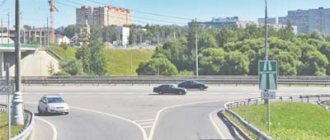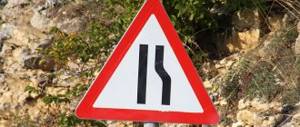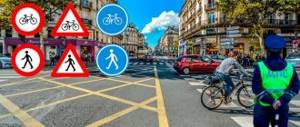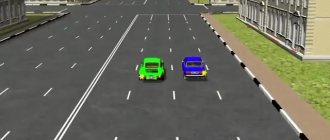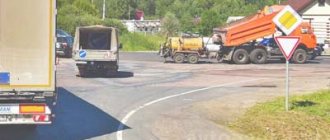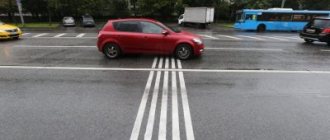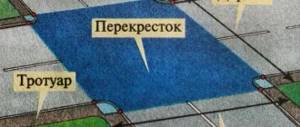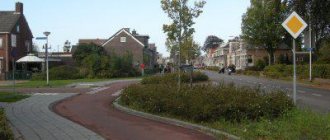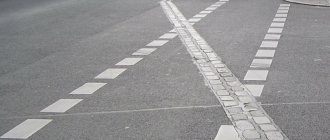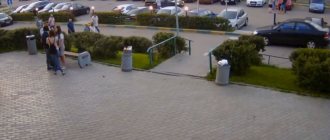What about the road?
A road as a linear object in construction, invented for the movement of vehicles and pedestrians, consists of the following components:
- sidewalks;
- roadsides;
- roadway;
- tram rails;
- dividing strips.
Sidewalks are given over to pedestrians, roadways to wheeled vehicles. Of all these points, the roads invariably have a carriageway. There are often no sidewalks even in the city. Instead, there is a curb. Tram lines are also not always present.
Dividing strips in the form of flower beds, lawns, reinforced concrete slabs are found on highways, highways, and avenues where several traffic flows pass. The dividing strip isolates cars traveling at high speed, most often from oncoming traffic.
Transport "artery"
Roadway is a strip on the surface of the earth with a hard or unpaved surface, built for the passage of 2, 3 and 4 wheeled vehicles. The width of the roadway according to GOST depends on its congestion (number of lanes). And also on the composition of the traffic flow and on the planned speed of movement along it.
A traffic lane is a strip of pavement along a roadway, the width of which forces cars to line up behind each other. Traffic lanes on the road are usually demarcated by markings or their type and number are indicated by road signs.
The concept of "carriageway"
The carriageway is a complex component of the road, organized for traffic. This means trackless, since it is technically not suitable for trams and trains.
In addition to cars, mopeds and sometimes bicycles can also be driven here. Pedestrians have the right to be in some areas of this space, indicated by symbols or markings. They are allowed to walk along it if movement on the sidewalk or curb is not possible.
The roadways are considered in great detail in the traffic rules, since driving rules on different sections differ.
We recommend reading about proper reverse parking. From the article you will learn how to properly perform parallel and perpendicular parking, and entering a garage in reverse. And here is more information about the types of parking lots and the requirements for them.
Road categories
Roads are usually divided into categories according to their technical characteristics.
| Road class | Category | Total number of lanes | Bandwidth, m | Width of the roadway, m | Car speed, km/h | Intensity of traffic flows, units/hour |
| Motorway | I | 4; 6; 8 | 3,75 | 2×7,5; 2×11,25; 2×15 | 110-130 | >2400 |
| Express | I | 3,75 | 110 | |||
| I | 3,75 | |||||
| 4 | 3,5 | 2×7,5 | ||||
| II | 2 or 3 | 3,75 | 7,5; 11,25 | 1600-2400 | ||
| III | 2 | 3,5 | 7 | 800-1600 | ||
| Regular | IV | 2 | 3,0 | 6 | 60—in, 90—outside NP | <800 |
| V | 1 | ≥4,5 | 4,5 |
As can be seen from the table, the width of the carriageway differs by road category due to the different number and size of its constituent lanes. The width of the traffic lane is calculated based on the dimensions of vehicles predominantly traveling on a given road. And also the lateral spacing between cars, which should not be less than 0.5 m. The distance from mirror to mirror in a passenger car is on average slightly less than 2 m. If there are no road markings, the width of the roadway is divided by eye equally between traffic participants in opposite directions .
In some places there may be widening for acceleration and braking. But the division into stripes does not depend on them. Inexperienced drivers sometimes perceive the width of the roadway as a sign of road priority where there are no corresponding road signs. This opinion is incorrect. Such roads are equivalent even with large differences in size.
Not like everyone else (stripes)
It is known that during the day the preferential directions of urban transport change. In the morning, a large flow of public and private transport tends to the center, in the evening to the outskirts. Multi-lane roads make it possible to facilitate traffic by serving opposite directions of moving vehicles at different times. This function is implemented by a reverse stripe, which has a special marking that can be seen by watching the video.
It is often supplemented by reversible traffic lights and information signs. The lane allocated for trackless public transport also has special markings. There is a road sign to indicate it. The rules for handling it are special and known to all drivers who have received a license. They are described in more detail in the next video.
If the middle lane on a three-lane dual carriageway is not marked in any way, it is used by all road users for maneuvers.
Features of the location of a vehicle or motorcycle on the roadway
The location of the vehicle on the roadway of the traffic rules is regulated by paragraph 9:
- when determining the correct location, you need to look at the markings, and in their absence, determine your lane by dividing the road in half (the second half is intended for oncoming traffic);
- you cannot drive behind the markings unless they are intermittent and the car is changing lanes;
- on a multi-lane road it is prohibited to overtake on oncoming traffic;
- you can move along passing tram tracks if they are on the left and other rows are occupied;
- the right lanes should be used more often, the left lanes only during heavy traffic or for turning, overtaking, or turning around;
- Be sure to keep a distance between vehicles in front (behind) and from right to left.
There are other important rules:
Vehicles whose speed should not exceed 40 km/h or which for technical reasons cannot reach such a speed must move in the far right lane, except in cases of detour, overtaking or changing lanes before turning left, making a U-turn or stopping in permitted cases on the left side roads.
On two-way roads, in the absence of a dividing strip, traffic islands, bollards and elements of road structures (supports of bridges, overpasses, etc.) located in the middle of the roadway, the driver must drive around on the right, unless signs and markings indicate otherwise.
The location of a motorcycle on the roadway is determined by the traffic rules the same as for a car. But given their size, these vehicles can drive between rows of cars in the absence of markings and with sufficient track width.
There's a lane here, there's a lane here
There are more and more cars in the country, but two-lane roads are common. On them, the width of the roadway varies widely. In a residential area it reaches 8 m, on regional roads - 6 m. In rural areas, where there are a lot of trucks, tractors and special vehicles, there is no point in making the lane width less than 3.75 m.
Two-lane roads suffer on steep, long ascents and descents, where large numbers of slow-moving vehicles can waste a lot of time for mobile vehicle drivers. For this purpose, it is planned to build an additional strip along part of the rise or its entire length. On steep mountain slopes, exits are arranged in the form of dead ends, which take vehicles with failed brakes away from the roadway, without forcing the driver to change the direction of travel.
What is a shoulder according to traffic regulations?
When dealing with the question of whether sidewalks and roadsides are part of the road, it is necessary to understand that, according to traffic regulations, the concepts of “road” and “roadway” are somewhat different. A roadway is an area through which vehicle traffic is possible. However, a road is a whole complex that can include a variety of elements.
According to clause 1.2 of the traffic rules, the shoulder is the edge of the road, which in any case must be in the same plane with it. This element is located directly next to the roadway, but there should be no separation here when using curbs or lawns. If we talk about tracks that are located outside the city, there may be variations in coverage. So, we can talk about grass or sand. It can also be soil or crushed stone. Answering the question whether the side of the road is a roadway, it can be noted that passengers can be dropped off here or the car can be stopped for a rest if there are no prohibiting signs. Pedestrians and cyclists can also travel here under certain conditions.
So, if there is no sidewalk, then a pedestrian can walk along it. If there are problems with traffic on the right side of the highway, a moped may be on it. And if there is no bike path, a cyclist can pass. In this regard, the answer to the question of whether the shoulder is a carriageway may seem difficult. Moreover, in the city there may not be a shoulder - if there is an edge strip that ends the roadway. A further element is the curb, which separates the areas of pedestrians and vehicles.
Sizes and types of stripes
Moving along a two-lane road with two-way traffic, the driver, walking at a speed relatively low in relation to the flow, is obliged to help the vehicle overtaking him to make a maneuver as quickly as possible. This is necessary to ensure that he has a place in front of you.
The minimum width of the roadway is 2.75 m. It is permissible during repair and construction work with the installation of additional signs. It is also possible in cases of existing unsuccessful development in a residential area or on short sections of reconstructed roads with the installation of restrictive signs.
The width of the strip is not limited from above. Although there is a whole movement of supporters of narrowing traffic lanes to European standards, justifying their position by the fact that in narrow lanes the driver does not lose concentration. Consequently, accidental collisions are less likely.
In addition (even a pedestrian can easily believe this), a wide lane provokes an increase in the speed of movement, which in urban conditions with heavy traffic congestion with cars of ordinary people with different experience and reactions (plus impatient pedestrians), is not safe.
A small analysis of the road structure carried out in this article shows that road patrol officers, who certainly issue their recommendations in this matter, do, if not everything, then a lot for traffic safety. Therefore, when communicating with hash workers, you need to have an open mind and try to understand what was done wrong and show respect for their even physically very difficult work. After all, they protect the lives of citizens no less than the police.
